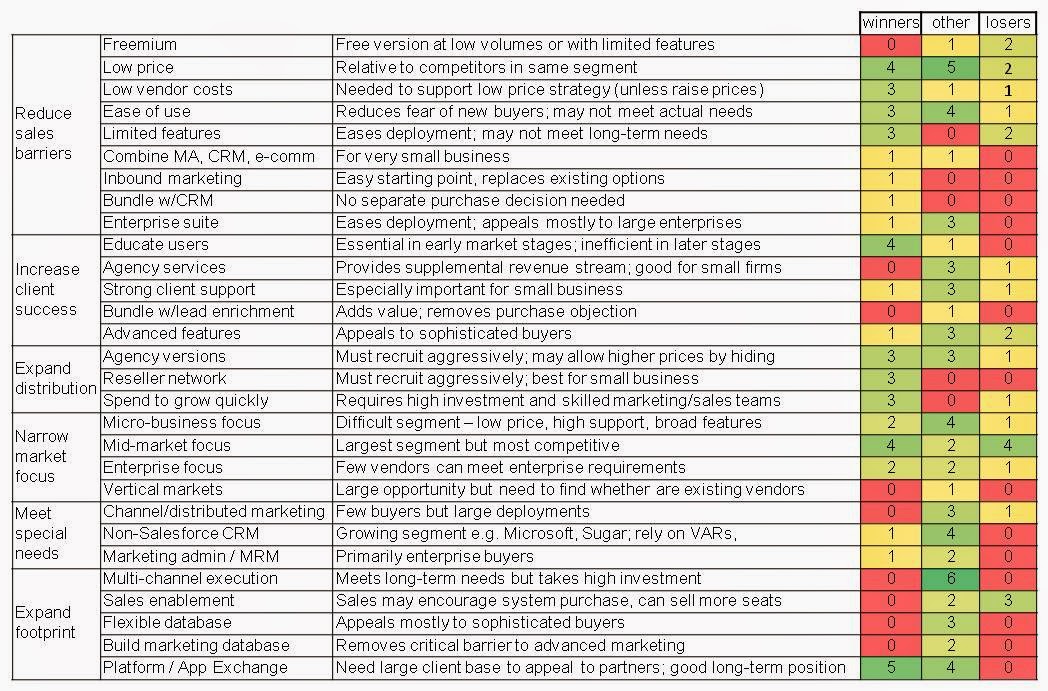The research identified 28 different strategies which fell into six major groups. Some approaches definitely had better track records than others, but it’s important to recognize that the market has changed over time, so past performance doesn’t necessarily indicate future success. What I found most intriguing was the sheer diversity of the approaches, showing that vendors continue to explore new paths to success.
The table below shows results for each strategy for each set of vendors, grouped by the major strategy categories. Most vendors used more than one strategy. Shading indicates the relative frequency of each strategy.

In general, the winners have focused on two of the major strategy groups: reducing sales barriers and expanding distribution. This made considerable sense in the early stages of a new market, when building awareness and market share was critical.
Within these categories, some strategies have worked better than others. Freemium has been particularly unsuccessful, while low price, ease of use, limited features, and agency versions have been applied by vendors with all types of results. Winning vendors were most distinguished by user education, reseller networks, and heavy spending to grow quickly. There is certainly some chicken-and-egg ambiguity about whether the companies were successful because of their strategies or were able to adopt those strategies after some initial success. One thing that doesn't show up on the chart is that some successful vendors have shifted strategies over time, generally moving away from low prices to higher prices and from small businesses to mid-size and larger.
As the market matures, I’d expect different strategies to become more important. Established vendors will need to focus on increasing client success in order to retain the clients and will want to expand their footprint to leverage their installed base, especially through setting themselves up as platforms. Those two shifts are well under way. Smaller vendors will find it harder to challenge the leaders, especially if they lack heavy financing. But they may be able to thrive in niches by focusing on narrow market segments or meeting special client needs.
The chart below shows the same data as the table but in a more visual format, for all you right-brainers out there.



No comments:
Post a Comment